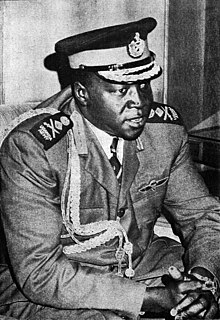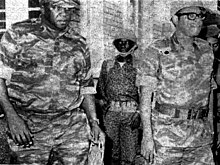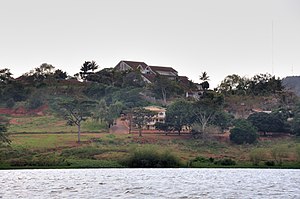5th Ordinary Session of the Fourth Parliament, in PAP Headquarters in Midrand, South Africa.October 2017
PRESIDENT OF THE PAN-AFRICAN PARLIAMENT H.E HON ROGER NKODO DANG RECEIVES FOR AN OFFICIAL MEETING HIS H.E ARCHBISHOP IOANNIS OF ZAMBIA AND MALAWI
His H.E. Archbishop Ioannis of Zambia and Malawi in his capacity as liaison between the Interparliamentary Assembly on Orthodoxy (IAO) The Interparliamentary Assembly on Orthodoxy for the past 24 years, has sought to contribute towards consolidation of positions, views and policies and the interpretation of social affairs, which have as their starting point, promotion of mutual understanding and peace through inter-religious dialogue and positive determination of relations between politics and religions and the Pan-African Parliament (PAP is an instituation who includes 53 countrie of the African continent), met with the President of the Pan-African Parliament, in the framework of the 5th Regular Assembly of the 4th Session of the Parliament.

H.E. Archbishop Ioannis conveyed the greetings of His Beatitude, Pope and Patriarch of Alexandria and All Africa, Theodore II, for the benefit of the Assembly's work, as well as the warm greetings of the President of the General Assembly of the Hellenic Federation of Sergey Popov (Member of the Council of the Federal Assembly of Russia) and the Secretary-General Dr. Andreas Michailidis (Member of the Greek Parliament).
The two officials discussed various issues including.
H.E. Archbishop Ioannis subsequently informed the President of the results and the decisions of the annual General Assembly of the IAO held in Rome at the premises of the Italian Parliament and H.E. Archbishop Ioannis presented a letter of invitation, from Secretary General of the IAO, for his participation, both at the World Parliamentary Conference, to be held on 26-27 March 2018, Lebanese Parliament, on a subject that will refer to the interparliamentary dialogue between Christians and Muslims and the need to protect Christians in the wider Middle East region, as well as for the celebrations of the 25th anniversary of the IAO, to be held in Athens.
Also, H.E. invited the President of the Pan-African Parliament, H.E Hon. Roger Nkodo Dang to the meeting in Lusaka, Zambia, on the premises of Parliament, under the auspices of H.E Pope and Patriarch of Alexandria and All Africa. Theodoros II,with the participation of members of the IAO and PAP.
The subject of the meeting's debates will be the dialogue of cultures, the role of monotheistic religions in the fight against terrorism and peaceful co-existence in Africa, emphasizing the need for reconciliation, mutual understanding and cooperation for peace and the protection of the weak among the great monotheistic religions.
The decision to open a permanent dialogue between cultures ,the engagement revolved around igniting interreligious dialogue in Africa as a means to promote peace, harmony and security,was taken at an earlier meeting between His Beatitude Pope and Patriarch of Alexandria and All Africa.Theodore II and the President of the Pan-African Parliament. H.E Hon. Roger Nkodo Dang.
See also
The Orthodox African Church (Patriarchate of Alexandria) denounces the exploitation of Africa by contemporary colonialists
Reconciliation On Social Justice: The Consequences of Low Aim
Tales from Dystopia XXI: Capitalism and alcoholism (a voice from South Africa)
Grace and “the Inverted Pyramid”
Orthodox Mission in Tropical Africa (& the Decolonization of Africa)
African Initiated Churches in Search of Orthodoxy...
How “White” is the Orthodox Church?
Ancient Christian faith (Orthodox Church) in Africa
LIVE, BEYOND THE LIMITS!
Eight principal areas of convergence between African spirituality and Ancient Christianity
The Orthodox Church in Zambia & Malawi
Orthodox Zambia
Orthodox Malawi



















